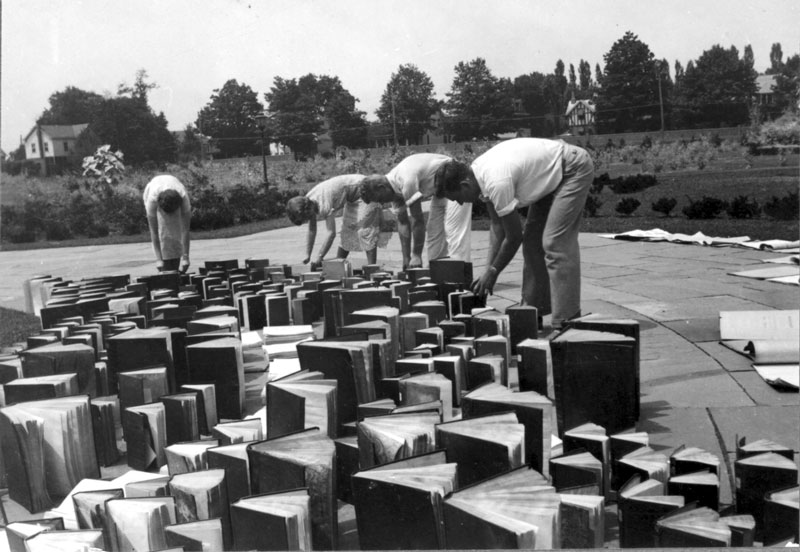


Legends and Lore: A Flood of Bibliographic Proportions
November 02, 2021
Memorial Hall was built to carry our thoughts into the past. Bronze tablets bearing the names of fallen soldiers reflect Blue Hens’ sacrifice in a century-old world war. Greek columns speak loftily of a time when colleges’ now-pervasive brick-and-ivy vernacular was first embraced.
Today, some 97 years after it opened, the building’s own past seems less visible. Few realize this centerpiece of The Green was built to commemorate World War I with the help of thousands of Delaware schoolchildren, who contributed their spare pennies to its construction, or that its basement was hand-excavated by UD students and professors. Not many know that it originally served as UD’s main library, or that it held the first iteration of The Scrounge, which served as a social bridge between the segregated men’s and women’s campuses.
And hardly anyone remembers the Great Library Flood of 1937.
It happened on a July day after the school year had ended, when a torrential storm poured 17 inches of rain onto campus in just 12 hours, inundating the basements of several buildings—including Memorial’s, where 90% of the library’s books were shelved.
Within hours, an intrepid squad of six staffers and professors moved 10,000 volumes out of the basement and propped them onto The Green, pages fanned open to facilitate drying. Because windows and doors were swollen by water and couldn’t be shut, “the creatures of out-of-doors came in and lodged,” noted William Ditto Lewis, head librarian at the time. “As late as the opening of school, a small and very much puzzled toad was found wandering in the stack.”
Each day, students and staffers would spend three hours hauling books outside to dry—and another three hours bringing them in at night.
“The Memorial corridor became a storeroom for half-wet books and newspapers; more than a score of electric fans, corralled from all parts of the campus, converted the general reading room into a drying room while our friends worked fanless in classrooms and offices during the heat of July,” Lewis told The Review.
Some things were lost for good: A complete file of The New York Times and an art collection presented by the Carnegie Foundation. And despite Memorial’s iconic location, Lewis was not impressed with its prominent placement.
“The architect probably selected the lowest spot in what is probably the lowest campus in America, then dug a hole and put his library in it,” he quipped to the Newark Post, which described a city contending with its own chaos, and the destruction of “bridges, roads, cattle, crops, merchandise in stores, machinery and supplies.”
“Newark Police performed heroic deeds as they rescued motorists, calmed hysterical women and risked their lives through the wild night that will never be forgotten,” the Newark Post reported.
Contact Us
Have a UDaily story idea?
Contact us at ocm@udel.edu
Members of the press
Contact us at 302-831-NEWS or visit the Media Relations website


